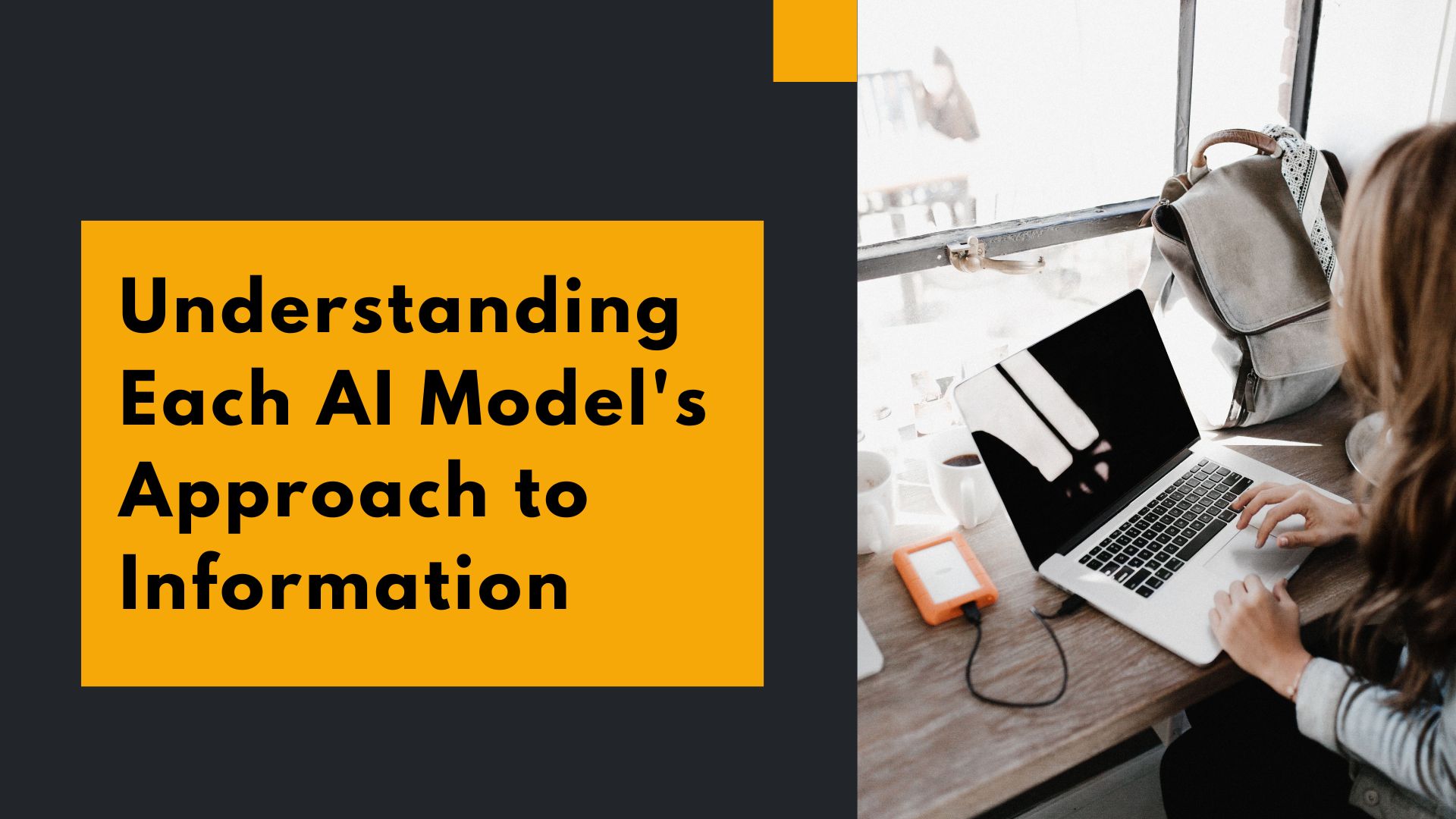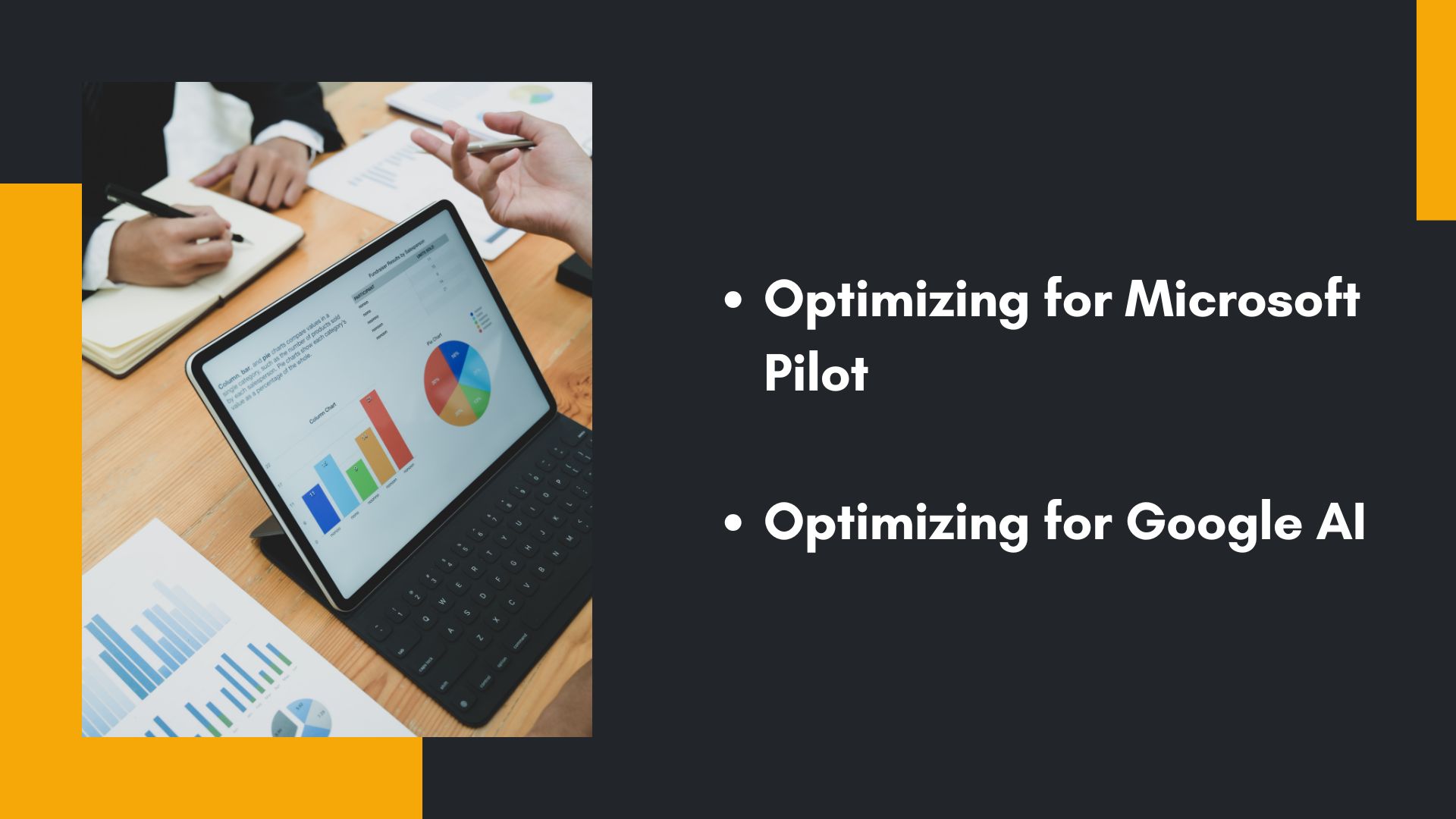Artificial intelligence has become an integral part of our daily lives, enabling us to accomplish various tasks. It does not matter whether you want AI to draw a picture for you or develop a coding program; it can do all these instantly without effort. Additionally, several institutions and education faculties have started implementing this facility.
As the rise of Artificial Intelligence has grown significantly in recent years, you will notice a wide variety of products coming to the market. For instance, you can refer to several AI models, such as ChatGPT, Perplexity, Copilot, and Google AI, which can automate a wide range of tasks for you.
In this article, we will examine each of these AI models and discuss how you can utilize them efficiently to complete your work.
Contents
Understanding The Role of Each AI Tool
Several AI tools, including ChatGPT, Perplexity, Copilot, and Google AI, have their own distinct capabilities. Even though they are similar AI models, their services and functions can vary a lot on several grounds, such as:
The Role of ChatGPT
ChatGPT is one of the most useful AI tools in modern times, primarily running on the GPT models developed by OpenAI. Moreover, the tool offers several uses, such as editing and writing content, providing programming assistance, and answering questions, among others.
Additionally, you will find several strengths in this tool, including customization and memory facilitation, as well as complex task management, and more.
The Role of Perplexity
Similar to ChatGPT, numerous implementations of the Perplexity AI tool are available, including concurrent data retrieval, citation of answer sources, browser-driven question answering, and many more. Nonetheless, this facility also has several strengths, including conventional search with AI integration and concurrent data availability.
The Role of GitHub Copilot
This facility is primarily operated by both OpenAI and GitHub, with various applications. For example, you can refer to developing algorithms, functions, learning programming designs, autocompleting codes, and many more.
Nonetheless, many benefits come from these AI models, including in-depth developer workflow integration, large public code datasets, and their suitability for software development.
The Role of Gemini (Google AI)
Most users are familiar with Google and its AI model called Gemini. Just like competitors, you can use this AI facility for various tasks, for example, writing doc aids, search arguments, Gmail summarization, etc.
There are also several key strengths associated with this AI model, including Google system integration, web data grounding, concurrent data processing, and private context, among others.
Understanding Each AI Model’s Approach to Information
As we have mentioned, several functionalities of these AI models have different approaches to processing data or information for task outputs.
Nonetheless, you can refer to these points:
Primary Function
- If we discuss ChatGPT, it is primarily a conversational AI tool for authentic language projects in various applications, such as coding assistance, productivity, answering questions, and writing.
- Just like ChatGPT, Perplexity AI can be referred to as an AI-driven search engine for various tasks. For example, it can offer cited and precise answers to your questions, integrating with concurrent web browsing and language models.
- The primary function of GitHub can solve most of your queries. For instance, it can assist developers in comprehending, completing, and writing a code model.
- Ultimately, the primary function of Gemini (Google AI) can assist with various tasks, including contextual assistance, search, and productivity. It can also integrate with the Google ecosystem, such as Gmail, search, and Docs.
Information Sourcing
- ChatGPT: The information sourcing method of this AI tool relies extensively on a vast collection of internet texts, including books, websites, and code, which primarily depends on pre-trained data.
- Perplexity: This AI tool implements larger language models alongside a live web search facility, which can also cite and rank data sources concurrently.
- Copilot: It features a data sourcing function that leverages open-source code available in various repositories and GitHub.
- Google AI/Gemini: This facility integrates Google search functionality with LLM facilities along with user information.
Output Style
Each AI model has its own different output styles, such as:
- You will find structured, in-depth, and conversational responses from CharGPT.
- Perplexity mainly provides TN output that relies on facts, conciseness, and source-linked summaries, integrated with search outputs.
- When discussing Copilot, the output style primarily defines code recommendations that are displayed inline in the IDE.
- The Google AI or Gemini has an output style that primarily reflects utility-driven results, relying on search contexts and Google Workspace integration, alongside in-depth information.
Key SEO Implications
The AI models, mainly ChatGPT, Perplexity, Copilot, and Google, have shown key SEO Implications. For example:
- The primary SEO implication of ChatGPT primarily refers to the acceleration of content development, which may also decrease the utility of search engines.
- When discussing Perplexity, it has a key SEO implication that highlights driving traffic to cited sources while also reducing click-through rates through content summarization.
- GitHub has its key SEO implications, which focus on minimal SEO influence, which can be observed in the code.
- Nonetheless, the key SEO implication of Google AI or Gemini is that it decreases organic traffic through AI overviews.
Shared SEO Strategies Across All AI Models
Each of the AI models has a different SEO strategy implementation. However, even in their contrast in procedure and function, you can gain many advantages from top-notch, well-organized, and impactful content. For example, here are some suggestions:
Foundational SEO
- If you seek help from ChatGPT for generating SEO content, you will receive improved content. However, your content won’t get indexed or ranked on the search pages.
- The foundational SEO role of Perplexity can help your content be indexed on web pages and rank according to various factors. For example, you can refer to formation, clarity, and authority.
- Copilot can also indirectly assist you with technical SEO by automating code, but you won’t get any ranking on search pages.
- If we discuss Google Gemini, it has an SEO arbiter, which is a function of the Google search facility. Nonetheless, this factor is responsible for several things, such as ranking, indexing, AI overview visibility, etc.
E-E-A-T
- ChatGPT: It indirectly reflects various E-E-A-T signals in its responses. However, it does not authenticate credentials or administrations if there are no source citations.
- Perplexity AI: This model actively highlights E-E-A-T by citing reliable and highly authoritative sources concurrently.
- Microsoft Copilot: This facility is irrelevant for content E-E-A-T as it only focuses on code quality, not on administration or authoritative sources.
- Google AI: This AI model directly implements the E-E-A-T protocols in your content by impacting various factors—for example, these include search rankings, snippets, AI overviews, and more.
User-Centric Content
- ChatGPT creates content that relies on specific prompts and concurrent user requirements.s
- Perplexity provides concise and direct solutions to your questions, accompanied by cited sources.
- The Microsoft Copilot supports developer requirements with context-driven code completion.
- The Google Gemini incorporates various factors to deliver user-centric content. For example, you can refer to user search data, context, and Google ecosystem information to customize responses.
Structured Content for Readability
- ChatGPT: It comprehends and creates well-organized content that responds efficiently to prompts.
- Perplexity AI: This facility mainly summarizes and focuses on pages that have a clear formation for sourcing.
- Copilot: It implements code formatting features such as comments, indentation, and docstrings to provide readable recommendations.
- Google AI: This AI model relies on structured content for various factors, including search ranking, AI overviews, featured snippets, and more.
Sematic SEO
- ChatGPT comprehends semantically rich prompts and content, and implements the necessary contexts to generate responses.
- The Perplexity AI ranks and retrieves content primarily based on semantic context alone.
- Moreover, the Microsoft Copilot implements context within code, not just in language semantics.
- Also, the Google AI has in-depth integration with various factors. For instance, you can refer to authentic language comprehension, structured information, and semantic search.
Different Strategies for Each AI Model
Working with different AI models will require users to employ distinct tactics. Moreover, here are some points you can follow:
A. Optimizing for ChatGPT Mentions
If you want to optimize your strategy for ChatGPT, you can go through these procedures:
Focus on Prominence in Training Data
ChatGPT extracts its training information from various sources, including Wikipedia, public domains, reference-driven websites, new articles, and forums. Moreover, if you want to make your content famous, here are some points you have to consider:
- Proper reference from multiple reliable sources.
- Broadly shared content across different platforms such as Quora, Reddit, GitHub, and many more.
- Your content has to be heavily linked to high domain authority.
Strong Bing SEO
If you enable the Pro tier of ChatGPT with an active browser, it implements the Bing search function for fetching concurrent data. Moreover, this can indicate that the sites that perform well with search engine optimization will have many facilities, such as:
- Included in the live browsing responses of ChatGPT.
- Get cited or linked in AI-driven solutions.
- Indicates various references on current updates, facts, stats, and many more.
High-Quality And Comprehensive Articles
Although it is impossible to regulate the static training information of ChatGPT, you can still enhance our website or brand opportunities for referencing in ChatGPT responses by making them have these characteristics:
- Standing out as broad and reliable.
- Integrates with semantic user intent.
- Visible in broadly linked and indexed sources across the web.
Topical Authority
You can mainly refer to topical authority as the perceived proficiency of your content alongside the breadth of a particular subject field. Nonetheless, regarding ChatGPT, topical authority enhances the relevance of your content in AI outputs. Moreover, you can also go through these points:
- Creating a topical content hub.
- Implementing semantic SEO.
- Publishing first and definitive content.
- Appearing in high-authority communications.
Monitor Mentions
To optimize your content for ChatGPT mentions, create authoritative content and actively monitor how, when, and where your content is referenced in AI responses. Nonetheless, this is a crucial factor for the following points:
- Validating your content effectiveness.
- Comprehending the ChatGPT reference in your content.
- Detecting advantages for authority optimization.
- Finding inaccurate references to your content.
B. Optimizing for Perplexity AI
Strong Citation And References
Unlike the ChatGPT function, Perplexity AI primarily cites sources for content. Moreover, it indicates that your content has a better chance of going viral if it focuses on various factors, such as credibility, semantic pertinence, and clarity. Nonetheless, here are some points you can follow:
- Perplexity mainly focuses on content that can be easily summarised and quoted.
- It rewards websites that provide in-depth coverage of a subject.
- It detects various elements, including tables, FAQ answers, and bullet points.
Explicit, Factual, And Data-Backed Content
To optimize your content through Perplexity AI, you primarily need to gain visibility and citations by providing data that this AI model can conveniently verify, interpret, and reference for your content. Nonetheless, here are some points that suggest this AI focuses on these factors:
- The AI model always highlights sources that are mostly verified and reliable.
- It can answer your question efficiently by integrating authentic language summarization and web search.
- The Perplexity AI indicates content that is well-organized, reliable, and concise.
Focus on Niche Expertise
For this procedure, you primarily need to rely on the most credible and reliable sources that focus on the subject. As this AI model is a search-oriented language facility, it highly focuses on content that is authoritative and reliable. Nonetheless, this is why the following step is crucial:
- Content sources that are highly proficient in a specific domain.
- Sources that showcase breadth more than depth.
- If the source can offer well-organized and accurate solutions.
User-Generated Content
Improving the Perplexity AI model by implementing UGC (User-Generated Content) is a strategic approach for enhancing various factors, including citation visibility, administrative authority, and topical breadth. Nonetheless, it is a critical step in Perplexity AI for:
- Summarizing and crawling highly enabled web pages.
- Preferring real-world perspectives, human-like answers, and FAQs.
- Focusing on content that is specific, fresh, and has an authentic language.
C. Optimizing for Microsoft Pilot
Focus on Bing SEO Fundamentals
The Bing SEO matters for Microsoft Pilot for various reasons, such as:
- Using Bing for citing and summarizing web pages.
- Integrating web content into formats like Excel, Word, and many more.
- Pulling suggestions and assistance from Bing Chat.
Publish Enterprise-Relevant, B2B-Friendly Content
If you want to publish enterprise-relevant and B2B-friendly content, you have to rely on
- Aligning with enterprise communication protocols.
- Enhancing credibility and retrieval relevance.
- Enabling efficient LLM outlining and summarization.
Microsoft 365 Integration
For Microsoft 365 integration, you mainly have to focus on points such as:
- Using clear headings, summaries, and bullet points.
- Including callouts, speaker notes, and slide titles.
- Implementing charts, cell comments, and labelled columns.
Target Task-Oriented Queries
There are many strategies you can follow for this procedure, such as:
- Using action-driven headers and titles.
- Making procedural and instructional content.
- Using content formats that are transformation-capable.
D. Optimizing for Google AI
Paramount Google Ranking
If you want to achieve paramount Google ranking by optimizing this AI model, you can follow these points:
- Mastering core web vitals and page experience.
- Dominating topical authority and topic clusters.
- Targeting queries that are navigational, informational, and transactional.
- Optimizing Experience, Expertise, Authoritativeness, and Trust (E-E-A-T)
Google’s Helpful Content System
You can mainly refer to the HCS (Helpful Content System) as a crucial part of the search ranking algorithm of Google, which can:
- Reward content that is for people.
- Devaluating content that is inauthentic.
- Promoting reliability, in-depthness, and initial experience.
Structured Data
If you integrate structured data for optimizing Google AI model, your content will benefit from several aspects, for example:
- Knowledge panels. Featured snippets.
- Increased search visibility and rich results.
- AI-generated summaries.
Multimedia Optimization
There are many reasons why Multimedia is an essential component in Google AI mode. For instance:
- Boosting dwell time, engagement, and E-E-A-T cues.
- Requiring well-organized signals for contextualizing multimedia assets.
- Preferring visual answers, such as in SGE carousels.
Anticipate ‘Next Step’ Queries
There are many tactics that you can implement for following step queries, for instance:
- Mapping out logical query sequences.
- Implementing in-content prompts to guide follow-up queries.
- Implementing H2 and H3 headers for reflecting follow-up intent.
Tools And Monitoring for AI SEO
There are many tools and facilities you might require for monitoring AI search engine optimization, such as:
Intent Research And Keyword Tools
Tools such as SEMrush, Ahrefs, and Moz are used for competitor analysis, keyword volume, and difficulty analysis. Moreover, you can also refer to SurferSEO and Frase for brief content development that relies on intent-oriented content.
Tools for Content Improvement And Development
You can use GPT-4 or ChatGPT for brainstorming FAQs, generating drafts, nd creating outlines. Moreover, you can also use the Hemingway Editor and Grammarly to ensure readability and clarity.
Rank Detection And SERP Inspection
There are many tools available for rank tracking, such as Rank Ranger and SEMrush. Also, for snippet tracking and visibility, you can operate with Sistrix.
In Conclusion
The role and significance of AI models have become a significant aspect of our lives, and there is hardly any doubt that they dominate the technical industry and our daily lives. Nonetheless, as artificial intelligence continues to develop with new features, we should not forget the human touch in various disciplines.
Moreover, despite the downsides of AI usage, if appropriately implemented, it can open up many new paths that can be accessed through various automation capabilities. Nonetheless, the adaptability of these AI tools is crucial because the entire future will now depend on it.






